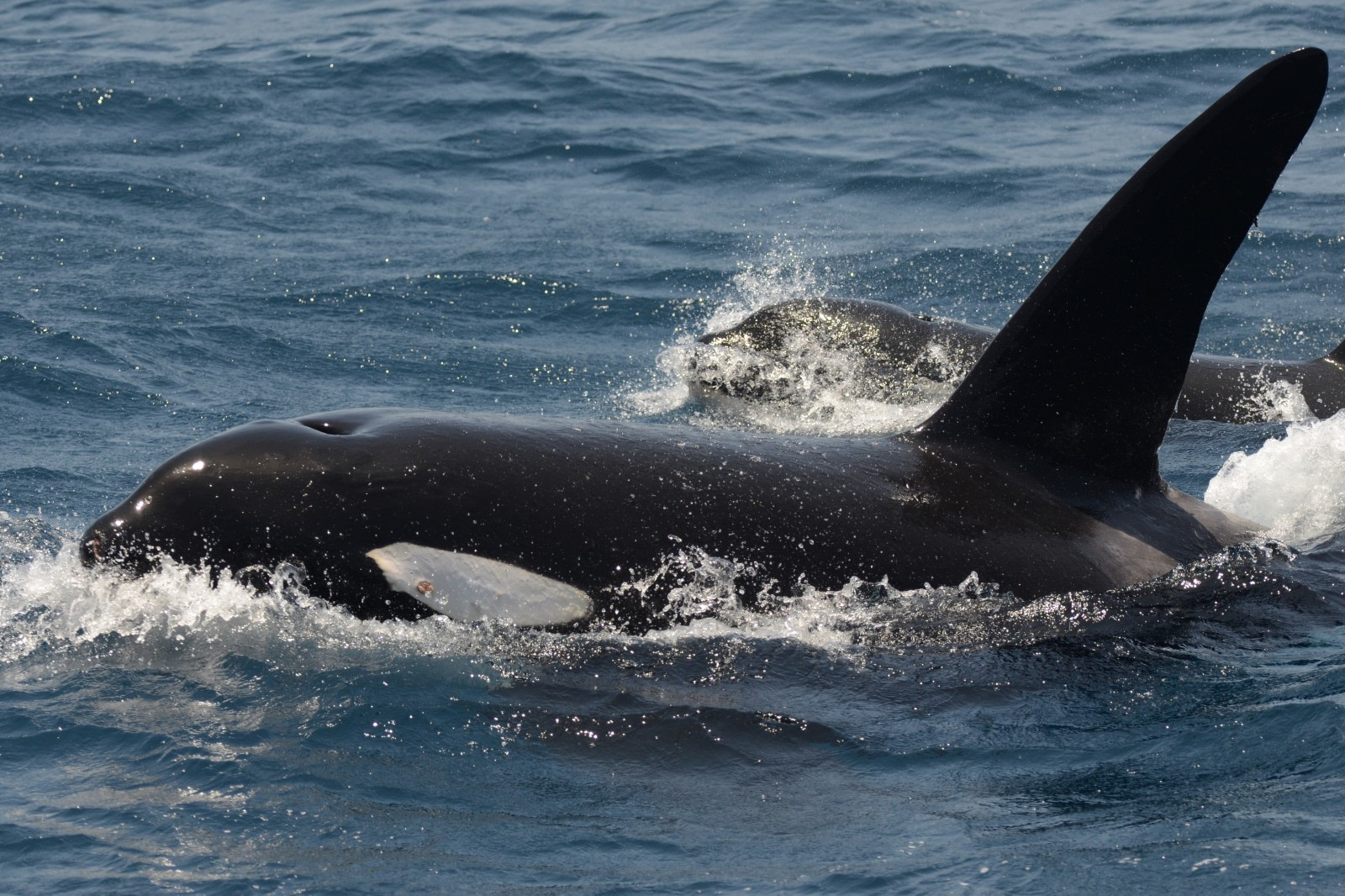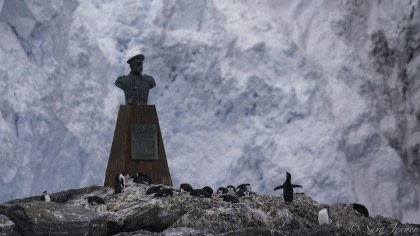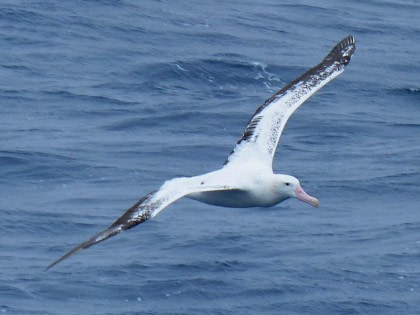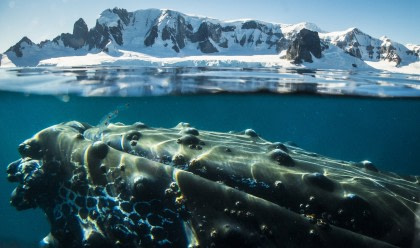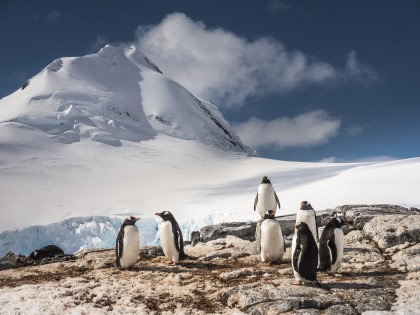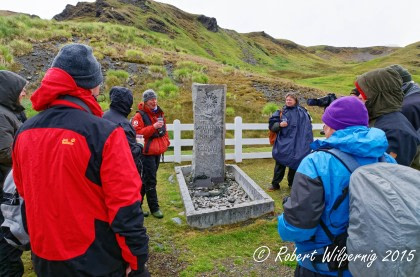Eight whales you could see in Antarctica
They're powerful, beautiful, and really, really big. Whales are a wonder of the natural world, and one of the best places to see them is Antarctica. In fact, whale watching is one of the most popular and rewarding activities you can enjoy on an Antarctic trip.
But which whale species are you most likely to see in Antarctica?
Here we'll answer that important question, discussing key aspects of the whales you'll have the best chance of encountering on an Antarctica cruise. Though the specific species you will see depends on many factors beyond our control (weather, sea ice, and more), the Antarctic whales listed here are among those most often spotted by our guides and guests.
Blue whales
Blue whales are one of the most beloved Antarctic whale species, and it's not hard to see why. These are the largest creatures ever to have lived on Earth, making even the largest dinosaurs seem small by comparison. A child could virtually slide through a blue whale’s aorta, though we wouldn't recommend trying.
It may be surprising to learn that the giant blue whale's body runs entirely on tiny krill - up to four tons per day, actually. You can find out more about this Antarctic whale at our blue whale blog as well as our dedicated blue whale page.

Fin whales
Despite their immense size (second only to blue whales), these Antarctic whales can really move. They're the fastest of all the giant whales, able to burst up to speeds of about 45 kph (30 mph). Known as the “greyhounds of the sea,” fin whales are also quite loud. They can call out to each other in the range of 80dB, just shy of the amount of noise you hear when a small plane flies overhead. This sound can be heard by other whales in Antarctica for over 100 km (60 miles). Our fin whale highlight page is filled with more fun fin-related whale facts.

Humpback whales
Out of all the Antarctic whales covered here, humpbacks might be the easiest to identify. They are commonly seen breaching and slapping the water, making for some excellent photos. Though these whales tend to be loners, they sometimes cooperate with each other to feed. This is an activity called "bubble net feeding," and it is a real spectacle to see! Humpback whales can also be quite sociable toward other marine species and are even known to approach boats.
Humpback whales also demonstrate intricate mating calls, having a longer and more complex form of song than most other whales in Antarctica. You can find more details about this Antarctic whale at our humpback whale page.
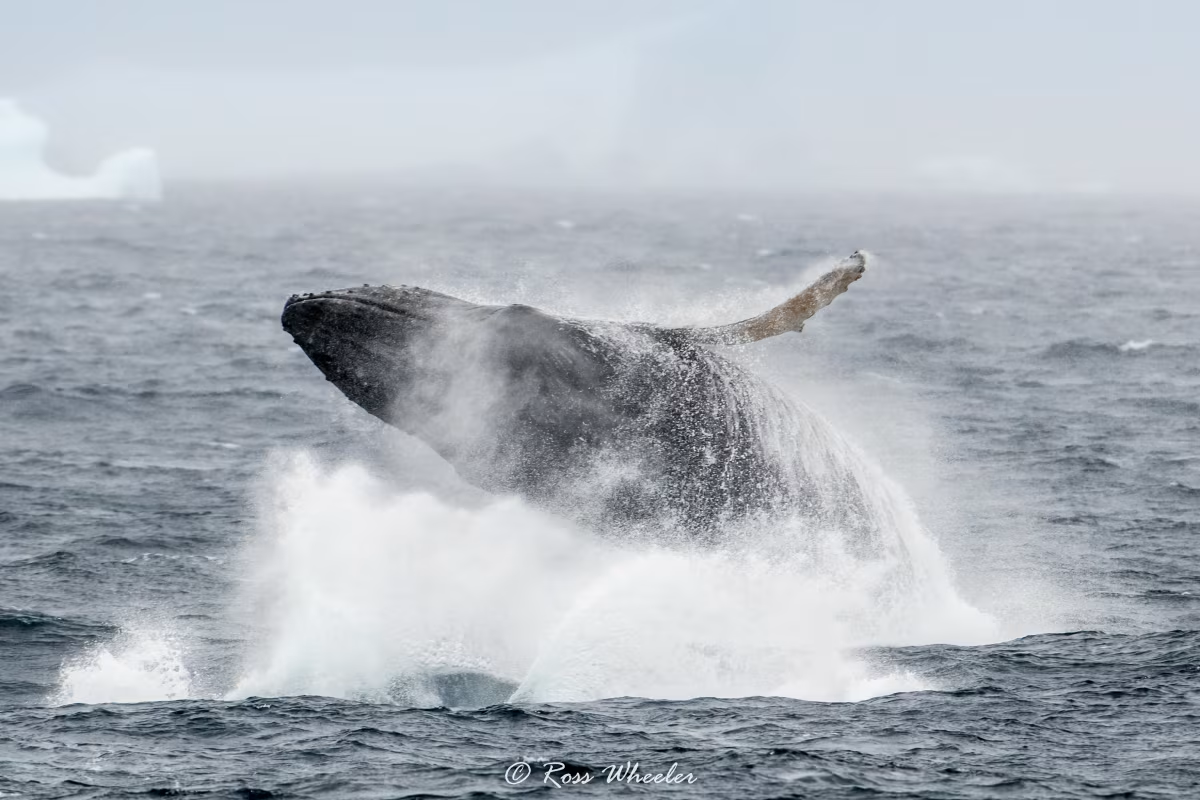
Orcas (killer whales)
The orcas you might see on your cruise are famed among the whales of Antarctica, known for their distinct black and white coloring. Also known as “sea wolves,” orcas are ferocious hunters who work together in packs to bring down their prey, which can be just about anything smaller than the largest species of whale.
Despite their name, killer whales are particularly family oriented and social. Some orcas have been known to stay with their mothers their entire lives. They sometimes also make friends with seals they often see, only attacking unfamiliar seals found along their hunting routes. Our orca whale page expands even further on this fascinating Antarctic whale.

Minke whales
These well-known whales can weigh up to 10 tons, though the average adult weighs around seven. This might seem enormous (and it is), but in fact, fins are among the smallest species of baleen whales in Antarctica. And if you thought fin whales were loud, you may be interested to know that a minke's call can spike over 150dB. That's equivalent to a really loud rock concert. Please see our minke whale wildlife page for more interesting details.

Right whales
The right whales you could encounter during your Antarctic cruise unfortunately earned their names because they were the “right” whale to kill during the whaling era. These Antarctic whales were chosen because they are slow swimmers, float when dead, and are found closer to shore than many other whales in Antarctica.
The crusty-looking formations on their heads are calluses that play host to barnacles, lice, and worms. You can learn more about this Antarctic whale at our right whale page.

By Ksnordstrand (Own work) [CC BY-SA 3.0], via Wikimedia Commons
Sei whales
The sei whale (pronounced “say”) is another example of a speedy Antarctic whale. When they need to, they can burst up to speeds of 80 kph (50 mph) for short distances, making them one of the fastest cetaceans in the seas.
Sei whales are relatively shallow divers, preferring to stay near the surface. That makes them easier to spot than some of the deeper-diving whales of Antarctica. However, they tend to prefer warmer waters, so we do not see them as often as other Antarctic whales. Our sei whale page will tell you more about this wonderful species.

Sperm whales
The sperm whales you might see on an Antarctic trip are usually going to be males, since female sperm whales prefer to remain farther north. These Antarctic whales dive deeper and longer than any other whale - as far down as 2 km (1.2 miles), though usually much shallower. They can stay underwater for up to two hours in search of giant squid.
They produce one of the loudest calls of all Antarctic whales, once being recorded at 238dB. Head over to our sperm whale page for more info on these amazing whales.

By Gabriel Barathieu (http://www.flickr.com/photos/barathieu/7277953560/) [CC BY-SA 2.0], via Wikimedia Commons
See these incredible Antarctic whales for yourself!
Though all the species mentioned here can also be seen in the Arctic, your trip to Antarctica will provide you some of the best whale-watching opportunities in all of the polar regions. This is why we offer a wide range of Antarctic whale-watching trips oriented around bringing you to best cetacean-spotting spots on the planet.
Check out our current options, and let's go exploring!

